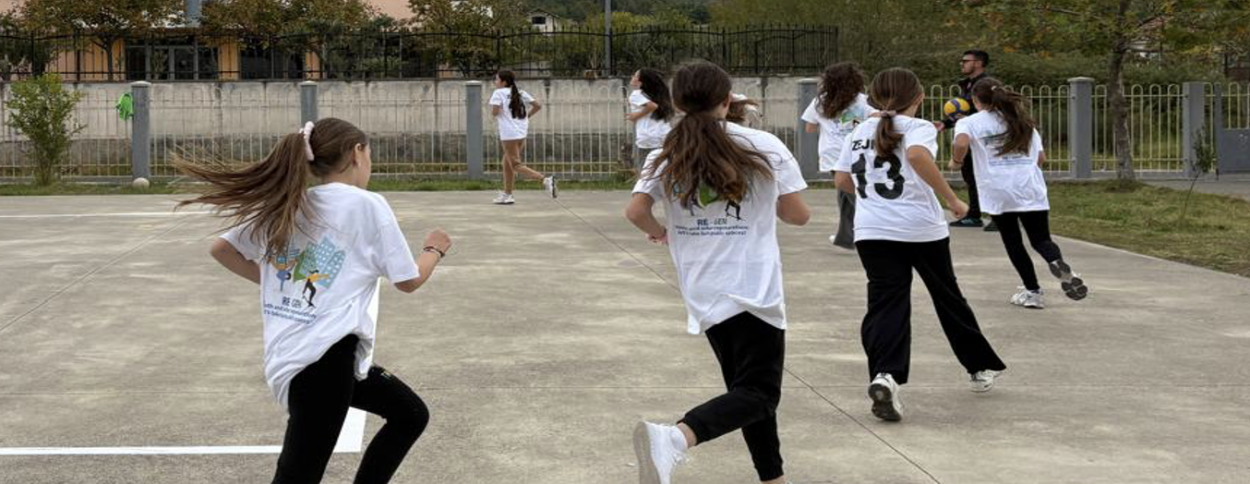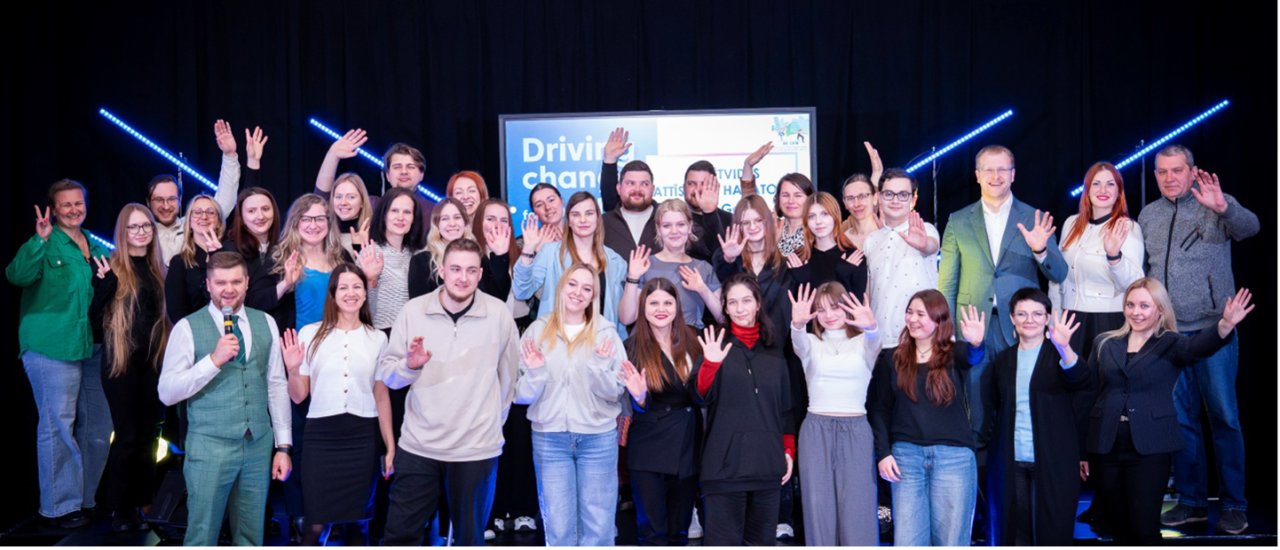A Movement Begins
Within the URBACT Re-Gen network, nine cities —Albacete, Daugavpils, Dobrich, Lezha, Milan, Pula, Corfu, Verona and Vila do Conde— have spent the last two and a half years learning, testing, and designing together. Their shared goal was simple but ambitious: to regenerate public spaces with and for young people, using sport, street culture and participation as drivers of change. Behind this goal lies a serious concern. The Active Healthy Kids Global Alliance reports that only one in four children in Europe meets the recommended level of daily physical activity. The World Health Organization (WHO, 2023) calls physical inactivity “one of the leading risk factors for mortality worldwide.” For today’s adolescents, less movement means poorer health, but also less social interaction, lower resilience, and weaker connections to place. Re-Gen responded by re-introducing movement — physical, social, and civic — into the heart of urban life. The project involved over 900 young people, 300 stakeholders, and 150 local organisations, proving that when cities invest in movement, they invest in the health and future of their citizens.
Testing Change: From Ideas to Action

The small-scale actions proved to be strategic instruments within the Re-Gen process. They allowed cities to test innovative solutions before defining long-term investments and to build networks of actors and stakeholders around shared goals. Through these experiments, municipalities engaged young people in concrete, visible activities and laid the foundations for new forms of collaborative governance that will guide the implementation of future Integrated Action Plans. Far from being isolated pilot events, the testing actions represented critical moments of collective learning — opportunities to translate participation into practice and to transform temporary interventions into enduring policy directions.
Across the network, the actions unfolded as chapters of a shared European story — one in which cities, youth, and communities learned to move together. In Dobrich, Daugavpils, and Corfu, sport and nature became complementary forces for regeneration. These cities worked within or around existing parks, transforming them into multifunctional environments where young people could reconnect with both physical activity and the urban landscape. Green Apple Park in Dobrich illustrated how a neglected field could be turned into an educational ecosystem, blending basketball courts with community gardening. In Daugavpils, the Youth Summer Festivals reactivated large open areas across the city through streetball, dance, and live music, transforming everyday spaces into arenas of civic celebration. Corfu, meanwhile, turned a park near the old prison into a symbol of rebirth, where running, volunteering, and environmental awareness converged to demonstrate that inclusion begins where the city dares to reimagine its peripheries.
A second cluster of cities — Milan, Verona, and Pula — explored the intersection of sport, street art, and youth culture. Here, the testing actions became vibrant laboratories of creativity and belonging. In Milan’s SUN Siro initiative, basketball merged with hip-hop and street food, turning a school courtyard into a stage for multicultural dialogue. Verona’s students participated in urban walks and co-design labs, sketching their vision of “urban arenas” where street sport could coexist with art and sociability, an experience that transformed schoolyards into democratic spaces of imagination. Pula’s young citizens revitalized the Rojc Community Centre through murals and skateboarding, practicing what could be called tactical beauty: a spontaneous fusion of physical movement, public art, and civic expression. Together, these experiences reveal how aesthetics and ethics can converge in participatory urbanism, producing not just functional but emotionally resonant public spaces.
In Vila do Conde, Albacete, and Lezha, the testing actions focused on active citizenship and collaborative governance. These cities prioritized the social and institutional dimension of movement — empowering communities to take responsibility for their common spaces. In Vila do Conde’s Dálias neighbourhood, residents and adolescents co-designed the renewal of a sport court, bridging generations and rebuilding trust in a previously divided area. Albacete turned social media into a participatory tool through the #ReGenAlbacete Instagram campaign, which encouraged young citizens to map neglected sites and propose creative reuses. What began as an online contest soon became a citywide dialogue on the value of youth perspectives in urban planning. In Lezha, the restoration of a disused gymnasium into a Youth Centre symbolized a broader transition toward shared governance: local authorities, schools, and NGOs jointly defined the vision for an inclusive space dedicated to sport, art, and environmental awareness. These cases demonstrate how movement — physical, social, and institutional — can serve as a foundation for democratic urban innovation.
Re-Gen Hackathon

A particularly meaningful experiment across several cities was the use of hackathons as a new instrument for youth participation. Cultural and sport hackathons were organized in Verona, Albacete, and Daugavpils to encourage collaborative problem-solving between teenagers, designers, and policy-makers. These intensive sessions blended creative design, digital tools, and teamwork, allowing participants to imagine prototypes of future urban sport hubs and community events. The hackathons proved to be more than pedagogical exercises: they introduced a new participatory grammar, one that replaces consultation with co-creation and transforms young citizens from passive observers into active agents of change. In many cases, the ideas generated during these events — from sustainable playgrounds to inclusive festivals — were later integrated into the cities’ Integrated Action Plans, ensuring that the enthusiasm of youth translated into tangible policy directions. Taken together, the testing actions across the nine Re-Gen cities formed a mosaic of complementary approaches. Whether through sport and nature, culture and art, or governance and technology, they demonstrated that public space can become a living laboratory where health, inclusion, and creativity converge. Each experiment may have been local and temporary, but collectively they redefined how European cities imagine the relationship between movement, participation, and the future of urban life.
Public Space as Common Space

Through these experiments, the Re-Gen network reframed what public space can be. Rather than designing “for users,” cities learned to plan with communities. Abandoned areas became common spaces — shared, co-governed and collectively cared for. In Re-Gen cities, Urban Local Groups (ULGs) brought together municipal departments, schools, youth councils, sport associations, and artists. Their collaboration bridged traditional silos: sport met culture, environment met education, and health met design. This shift echoes Elinor Ostrom’s theory of the commons, where shared management produces more sustainable and inclusive outcomes. Common spaces, when regenerated through sport and participation, have measurable effects. They improve physical and mental health, increase perceived safety, and foster a sense of belonging. They also create beauty — not in an ornamental sense, but as a lived experience of care, colour, and vitality. As one participant in Pula observed, “When we painted together, we stopped seeing walls as barriers; they became our canvas.” Beyond the aesthetic, this beauty has behavioural impact. Studies from the Healthy Cities movement show that people are more active and socially engaged in environments they find attractive and safe. Re-Gen confirmed this at a local scale: well-designed, co-owned spaces invite respect, while neglected areas breed disconnection.
A Movement of Movements

Re-Gen was never just about sport. It was about movement in its widest sense — a movement of people, of ideas, and of governance cultures.
There was the movement of ideas, expressed in hackathons, workshops, and city-to-city exchanges where young people brainstormed how to make their neighbourhoods more adolescent-friendly. There was the movement of events, with festivals, tournaments and street food fairs bringing life back to public squares. And there was the movement of co-design, where public spaces evolved into common goods, co-managed by communities and municipal teams. Through peer learning meetings in Verona, Dobrich, Daugavpils and other cities, participants realised they were part of a larger European narrative — one where local action and transnational cooperation feed each other. In the words of a youth worker from Lezha, “We discovered that regeneration is not only about buildings, but about relationships.”
As the cities exchanged knowledge, their people exchanged trust. Friendships were born between mayors and skateboarders, between planners and teachers. These connections formed what participants now call a “movement of movements” — a community that extends beyond the project and continues to shape policies, events, and networks at local and European level.
Legacy and the Road Ahead

After 2.5 years of experimentation, each city has produced an Integrated Action Plan — a strategic roadmap that embeds sport, health promotion, and youth participation into local development policies. Yet the real legacy of Re-Gen lies less in documents than in mindsets. The network has demonstrated that testing is not a preliminary phase but a culture of governance — a way for cities to learn by doing. It has shown that adolescents, when invited to co-create, become not just beneficiaries but leaders. And it has proven that small-scale actions can trigger long-term transformations, influencing how public space is designed, funded, and lived. In the coming years, Re-Gen cities will continue implementing their plans, investing in urban sport hubs, green corridors, and participatory programmes. But they will also continue investing in relationships — between departments, generations, and places. The Re-Gen experience offers a hopeful message: cities that move together, thrive together. When public spaces become common spaces, when street sport meets street art, when young people feel ownership of their city — then urban regeneration becomes more than a policy. It becomes a shared movement towards a healthier, fairer, and more beautiful Europe.
The City That Moves
The Re-Gen journey ends where it began — in motion. From Verona to Dobrich and Lezha, from Milan to Corfu and Pula, from Vila do Conde to Daugavpils and Albacete, the network’s cities have rediscovered that movement is the essence of urban life: the rhythm of steps, the sound of a basketball on asphalt, the laughter of teenagers in a park once abandoned. These are not small things. They are the heartbeat of a living city. A city that moves is a city that includes, heals, and imagines. A city that moves is one where sport becomes culture, where space becomes community, and where youth are active citizens.
The Re-Gen partners now carry this spirit forward, continuing to plan, play, and dream together — for cities that are active, inclusive, healthy, sustainable and beautiful.
Raffaella Lioce, Re-Gen Lead Expert

